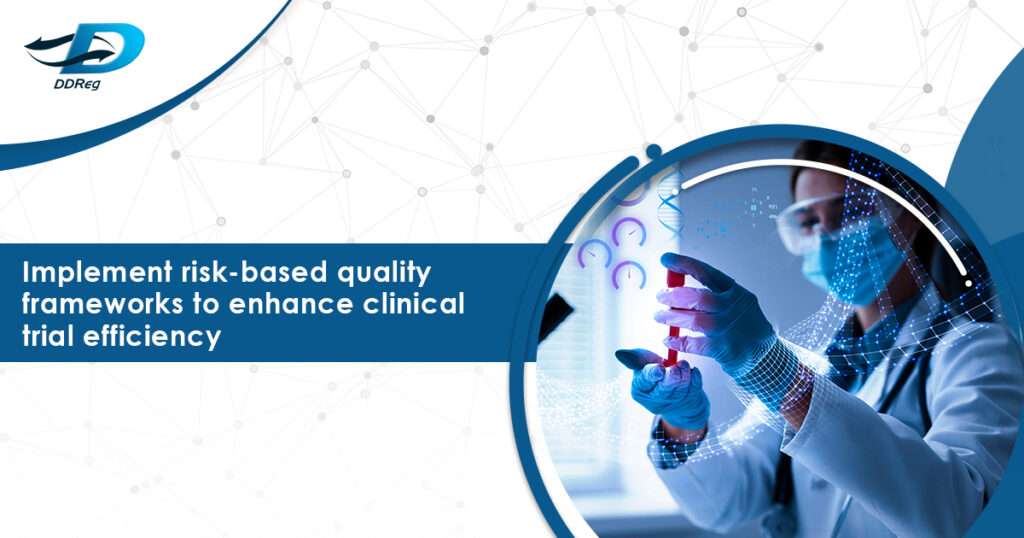
Quality by Design (QbD)
- The FDA’s initiative on Pharmaceutical Quality for the 21st Century and ICH’s guidelines (Q8–Q12) position QbD as a non-negotiable standard.
- In clinical research, ICH E8(R1) extends this thinking to trial design—highlighting the importance of Critical to Quality (CtQ) factors and patient-focused outcomes.
- QbD means identifying what truly matters—safety, efficacy, data integrity—and making those the foundation of how the study is built.
Data Privacy Regulations in Global Clinical Trials: What You Need to Know
Risk-Based Monitoring (RBM)
Gone are the days of 100% SDV (source data verification). RBM offers a smarter, more efficient way to monitor trials.
- FDA and EMA fully endorse RBM as part of the updated ICH E6(R2/R3) framework.
- The approach centers on identifying and focusing on critical data, endpoints, and processes rather than treating all data equally.
- Centralized and off-site analytics are used to monitor trends, anomalies, and risks proactively.
Sponsors are now combining RBM with AI-based statistical monitoring and real-world data to detect site or subject-level risks earlier and act faster.
Risk-Based Quality Management (RBQM): Your End-to-End Quality Ecosystem
Think of RBQM as the umbrella that brings QbD and RBM together. It’s a holistic framework that:
- Starts with protocol design,
- Integrates real-time monitoring,
- Adjusts based on dynamic risk,
- And aligns all stakeholders around continuous improvement.
RBQM covers data quality, patient safety, compliance, and performance across the trial lifecycle.
What’s new in 2025?
- Regulatory bodies (including ICH and ACRO) are pushing for centralized monitoring as a core RBQM practice.
- KRIs (Key Risk Indicators) and QTLs (Quality Tolerance Limits) are now streamlined—fewer, but more impactful indicators focused on what’s truly critical.
- CTIS rollout in the EU (fully mandated in January 2025) further supports risk-based, digitized oversight.
Where Technology Meets Regulatory Expectations
Technology is the backbone of modern risk-based approaches.
- Central Statistical Monitoring (CSM) and AI-powered anomaly detection are helping teams catch deviations before they happen.
- Real-world data and digital twins are being used to simulate trial risks in advance.
- Generative AI models like QA‑RAG support protocol optimization, risk categorization, and regulatory submissions.
The FDA and EMA are aligning faster than ever before, offering clear expectations on how digital tools, KRIs, and central monitoring should be implemented.
Challenges & Solution
Challenge | Solution |
Team resistance to change | Upskill teams and foster a shared ownership model across sponsor-CRO functions |
“Too many” KRIs diluting focus | Refocus on fewer but trial-critical metrics |
Fragmented tech platforms | Invest in integrated systems that combine CSM, MSRs, deviation alerts, and dashboards |
Outlook for 2025 and Beyond
Here’s what to expect over the next few years:
- Global harmonization of RBQM principles through FDA, EMA, and ICH alignment.
- Patient-centric design becomes standard, with QbD and RBQM enabling better recruitment, retention, and compliance.
- AI and real-time monitoring will become mainstream reshaping everything from protocol amendments to inspection readiness.
Conclusion
The regulatory landscape has spoken : quality must be planned, risks must be measured, and oversight must be intelligent.
Whether you’re designing a new clinical trial, optimizing operations across sites, or preparing for inspection-readiness, QbD, RBM, and RBQM offer the path forward not just to meet compliance, but to elevate the science.
How DDReg Can Help
At DDReg, we strategize your quality.
From developing QbD-aligned protocols to setting up risk-adapted monitoring frameworks and deploying centralized oversight tools, our experts help you meet today’s expectations and prepare for tomorrow’s.
Let’s talk about how to modernize your clinical operations. Or contact us directly for a consultation.
